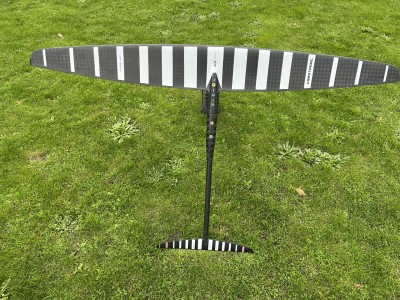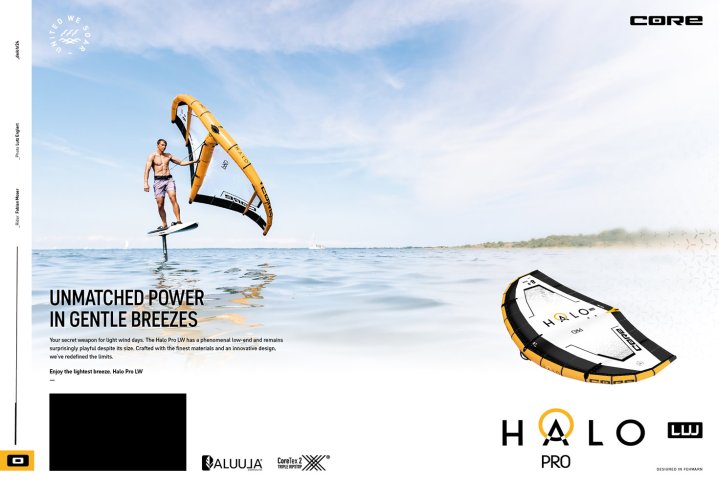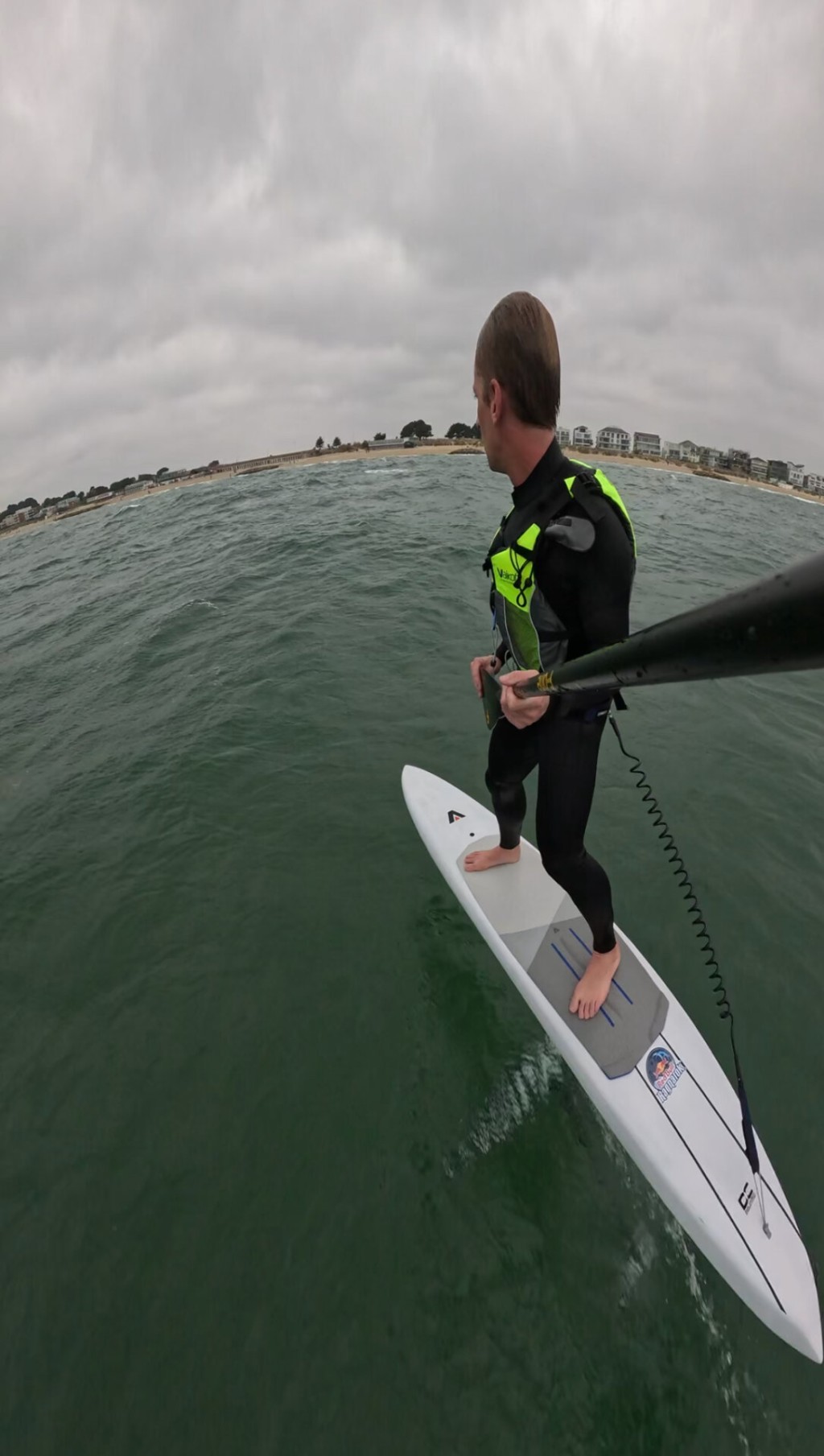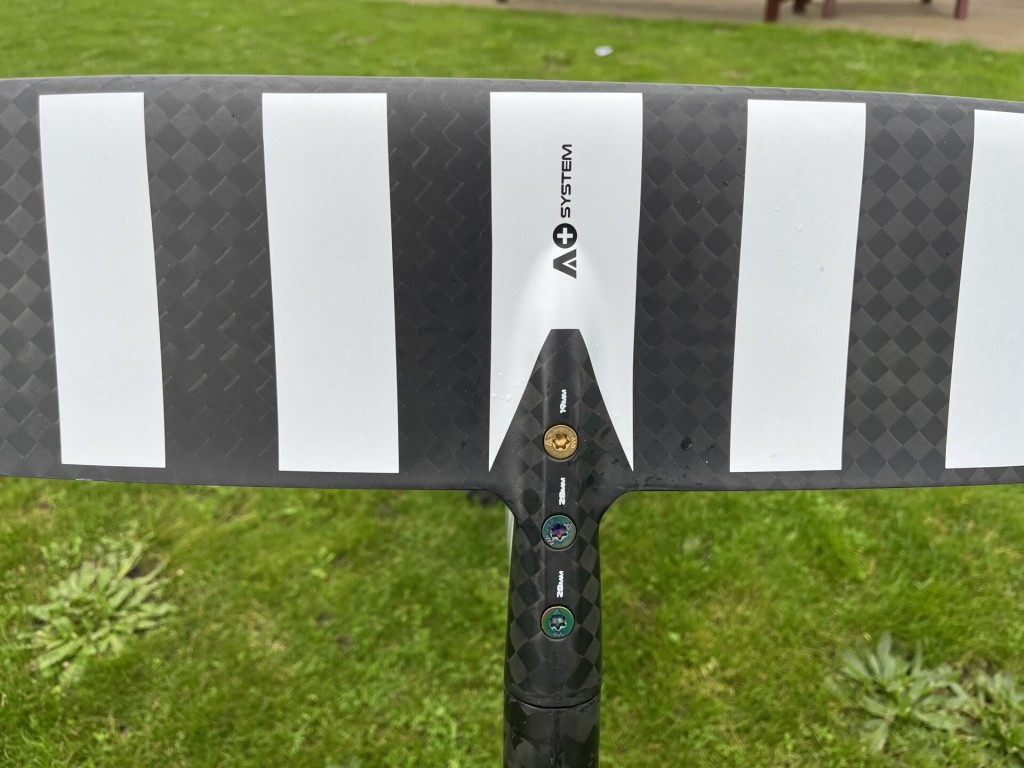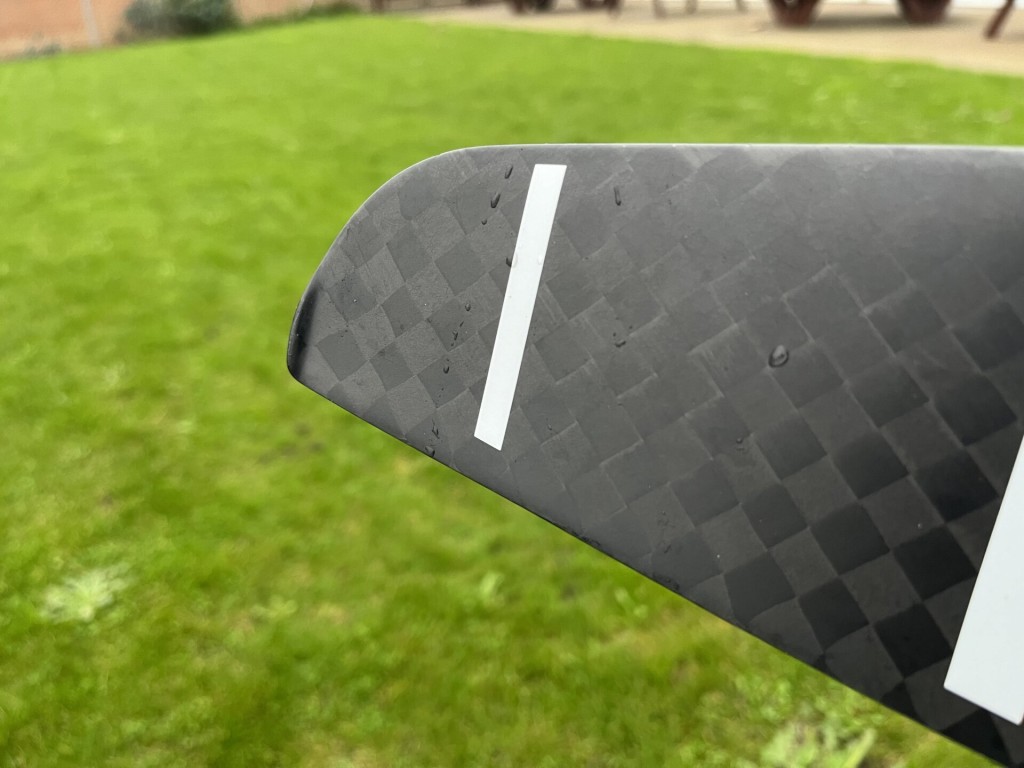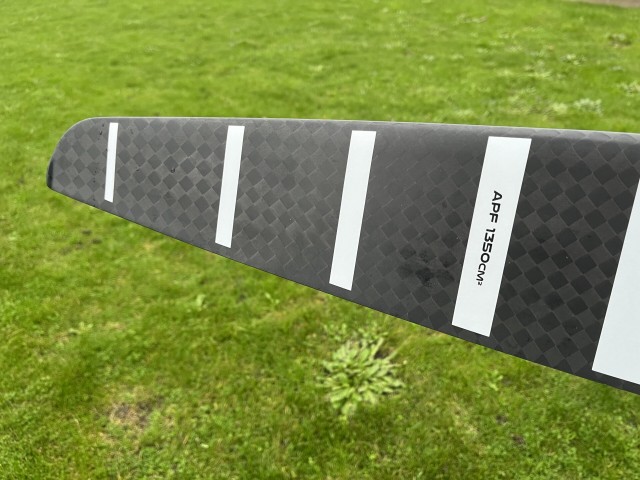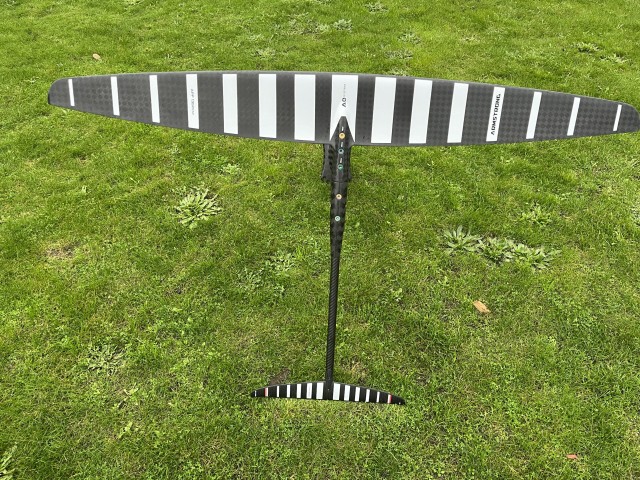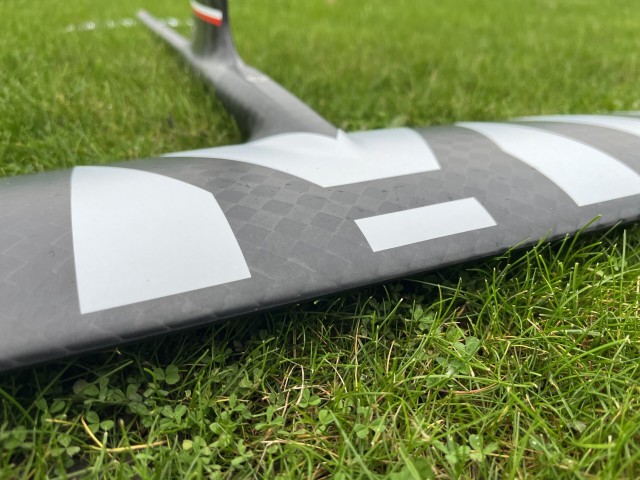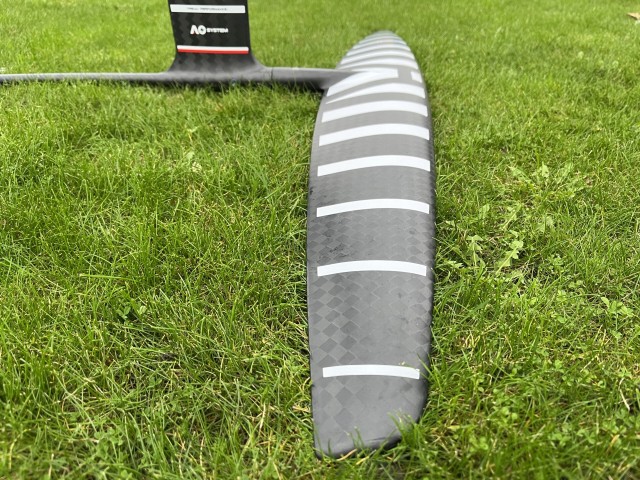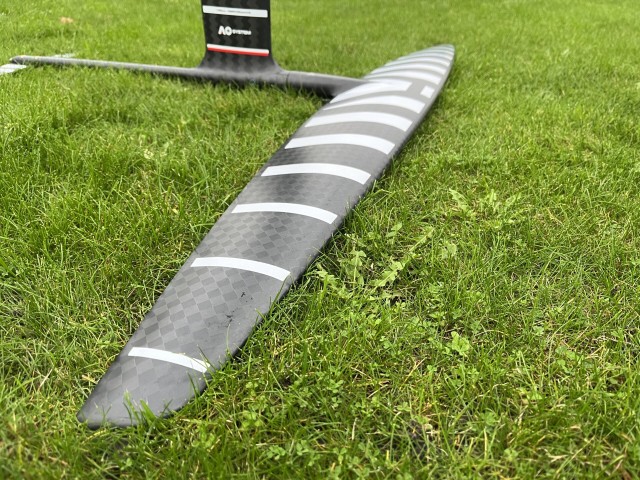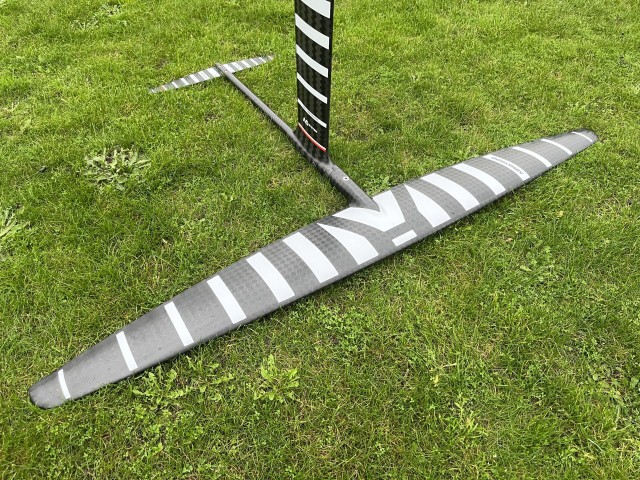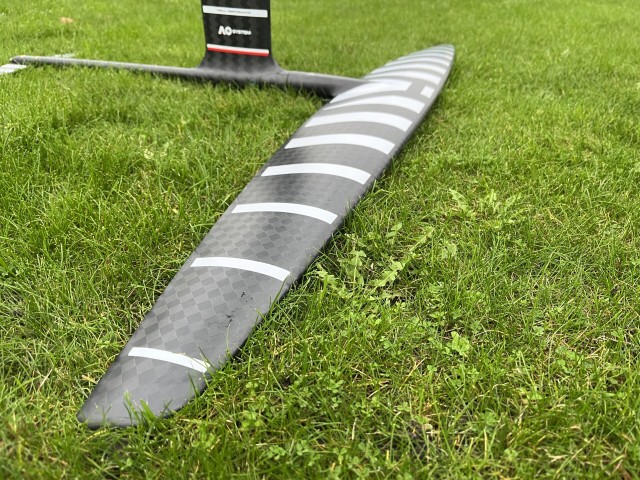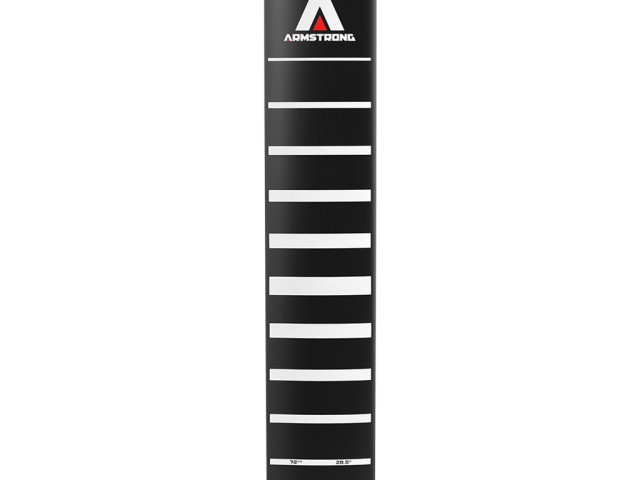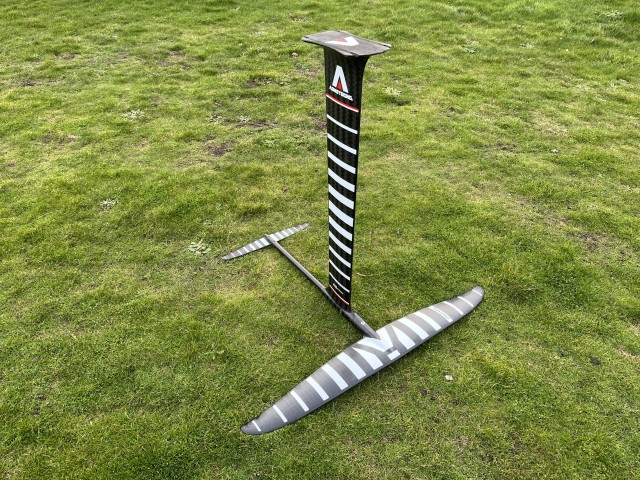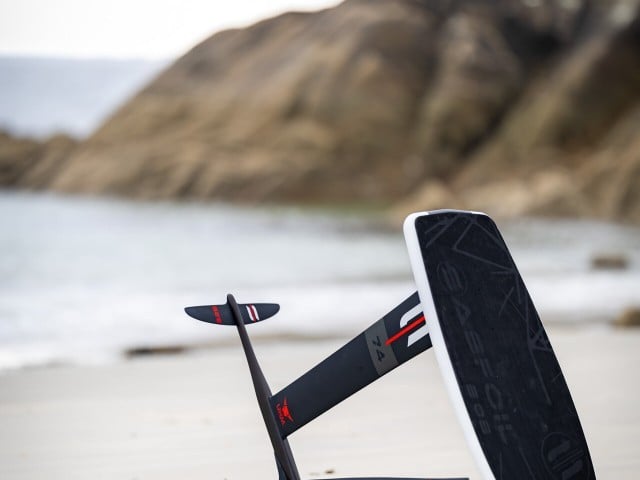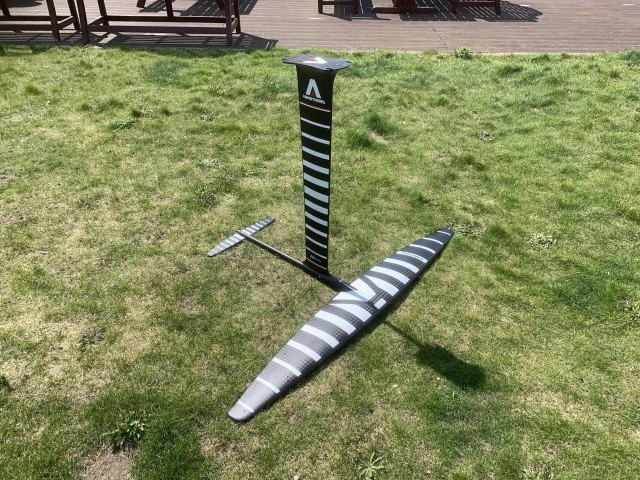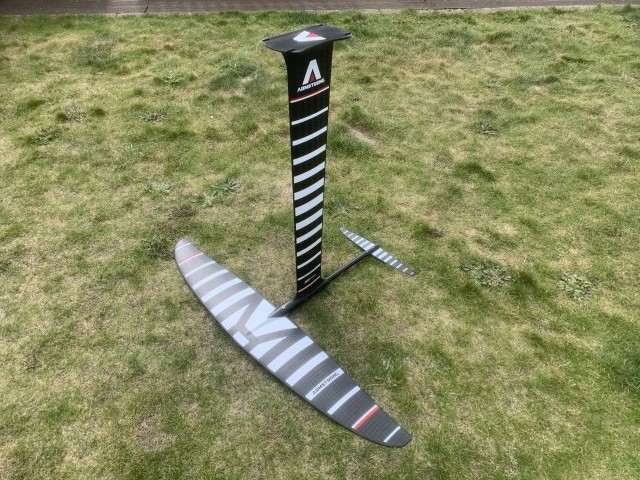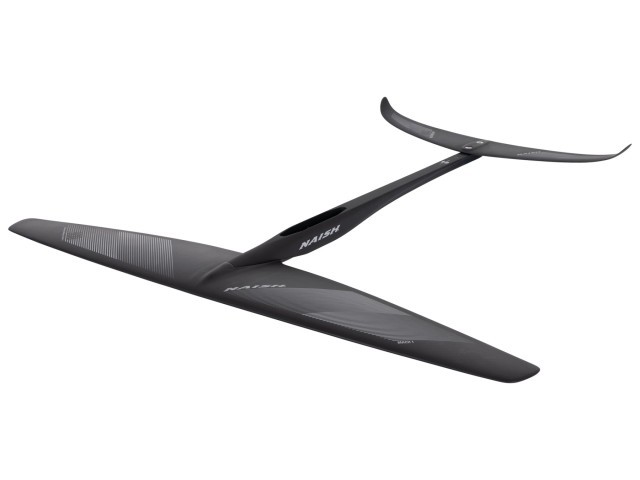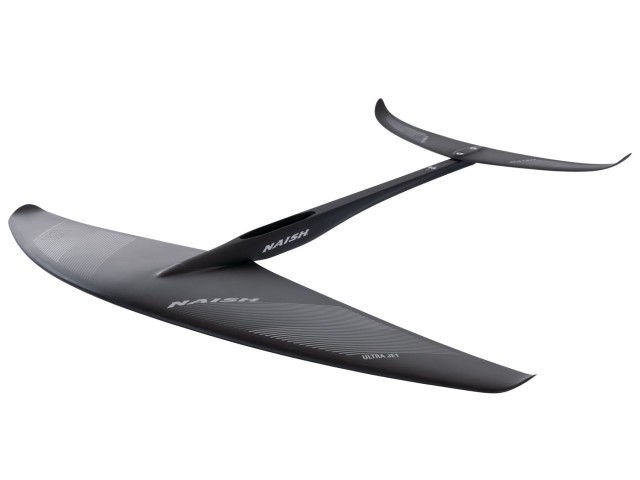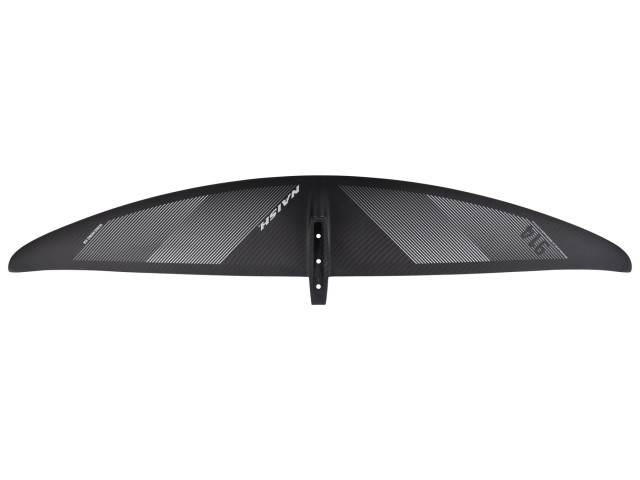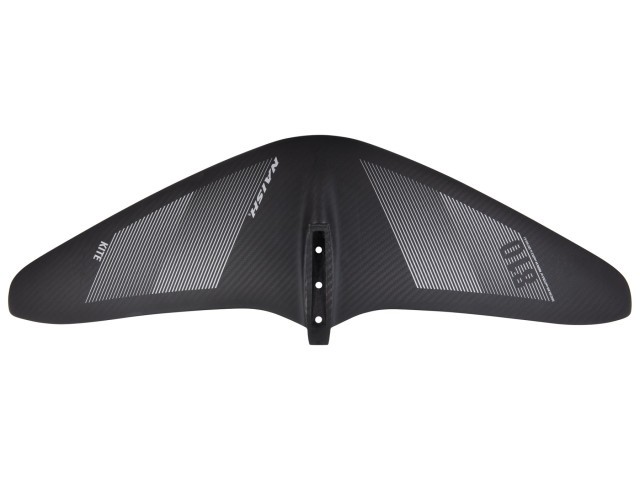At a Glance
I’d already had the APF1880 for a while when the 1350 arrived on test. While the 1880 was exceptional for pumping efficiency (I got my PB of 11 minutes flat water pumping on the 1880), it lacked glide speed and turning ability. So, I was super excited to try a foil that made some compromises to this!
According to Armstrong, the 1350 has been designed for riders from beginner to expert. With a carefully sculpted outline, straight leading edge, and high camber foil section, the APF produces extremely low stall speeds and responsive acceleration.
The APF 1350 has a 1350 cm² area, a 1202 mm span, and an aspect ratio of 10.7. True now to many of Armstrong’s foils, it has been designed in collaboration with Chris Porter, an esteemed aerospace engineer known for the Crisp 333 and 381 stabilisers. Having experienced several of Chris’s designs now, I couldn’t wait to get it on the water.
On The Water
I’ve had a bit of a journey of discovery with the 1350; it started as a foil that I believed I would only use periodically and turned into one of my most used foils!
When it arrived, I immediately took it out on my downwind SUP, first for a flat water session and later for a session in small bumps at the beach. I mostly combined it with the 795 Performance Mast, 70 fuse & Speed 180 tail. I really enjoyed it in the flat water. The stall speed is super low, so getting on foil wasn’t a challenge; once it was up, it pumped smoothly and efficiently. I always found the APF1880 a bit too draggy to be fun to pump, whereas the 1350 was fast enough to cover decent ground and be plenty manoeuvrable enough to have fun. That led to me spending a good amount of time on time, perfecting my stance and paddling while on foil skills. I highly recommend it just for that.
Next up, I headed to the beach in small onshore bumps for what I called a workout session. Paddling out to the sea prone position or on my knees, then turning, paddling up and riding the bumps back. It was a great session, and the foil was great for riding bumps and turning between them. I found some groundswell gliding past me; it was going too quickly for the foil. That meant I didn’t start using it as a downwind foil; as you’ll find out, I really wish I had!
A month later, I competed at the Crozon Foil Festival. You can read all about that in my article in this issue. The downwind races were run in very light winds, and after poor foil choice in the first race, I chose to ride the 1350 in the second race. The result was outstanding! As it was a bay run, there was no ground swell, so the foil speed was perfectly matched to the 8-10 knot wind bumps, and I had a brilliant race. I found that the less I pumped, the more I turned on the wave and saved my energy. I’d never downwinded in light wind conditions in a bay run, and it opened my eyes to the possibilities of this sport. I came 43rd out of 100 in that race, and the foil made a big difference.
When I returned home, I immediately started looking at the forecast in a very different way. I headed out in lighter conditions, using the 1350 as my downwind weapon. I’ve completed several runs in 8-12 knots and small ground swell. It’s been super fun, adding to both water time and adventure!
Overall
This versatile foil provides serious efficiency, making it a great choice for anyone looking to maximise their time on the water. Armstrong’s APF1350 has mastered the balance between low stall speeds, stability and ease of use, helping you glide with minimal effort and build your skills in pump foiling and downwinding.
It clearly has some limitations regarding groundswell, but as a lightwind downwind foil, I can’t fault it. I highly recommend adding this foil to your quiver, whether you’re a beginner learning to flat water start & downwind or an advanced rider looking to push the limits of lightwind riding.
This review was in Issue 22 of Tonic Mag.
For more information visit Armstrong FoilsRelated
By Jack Galloway


